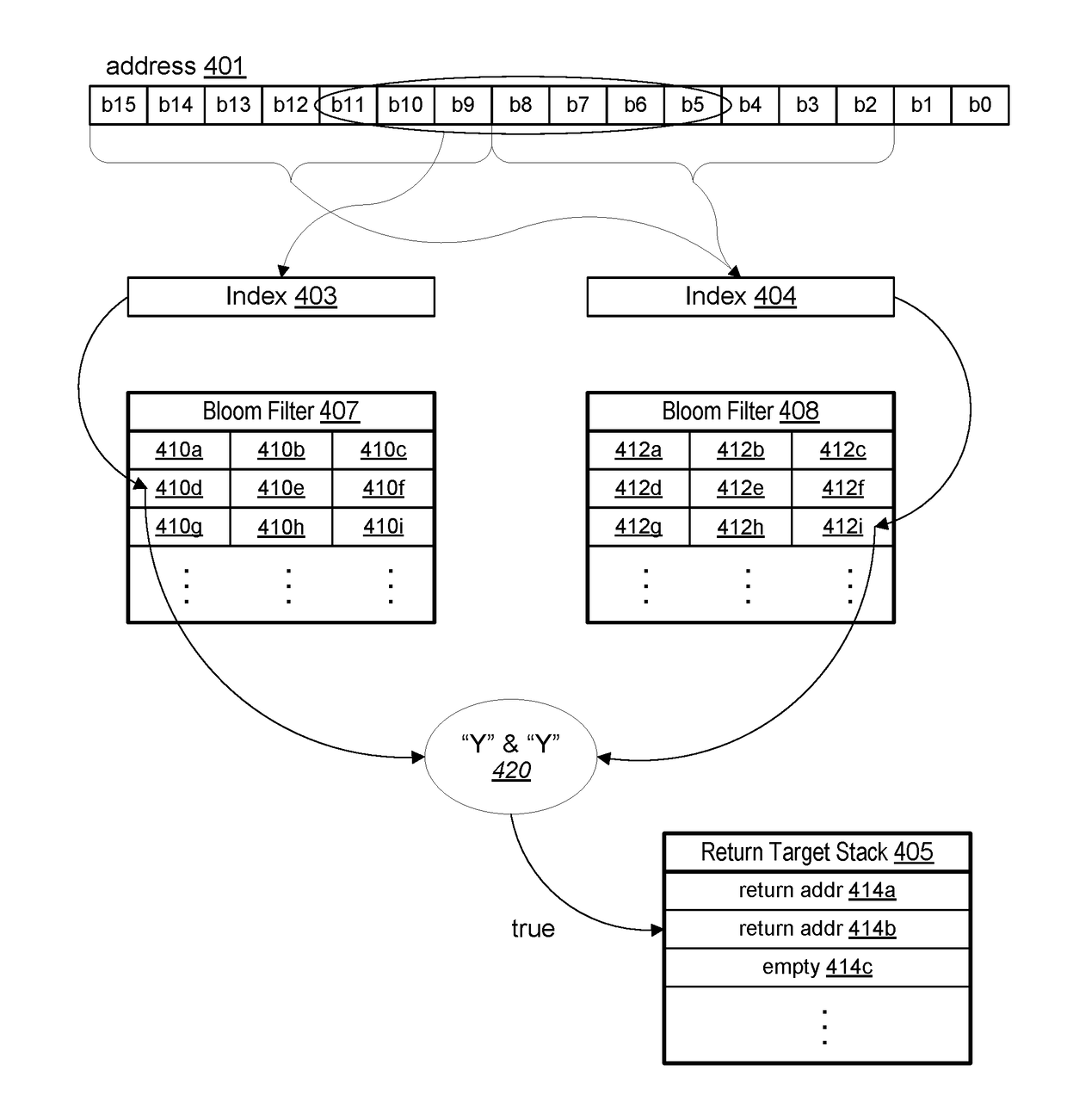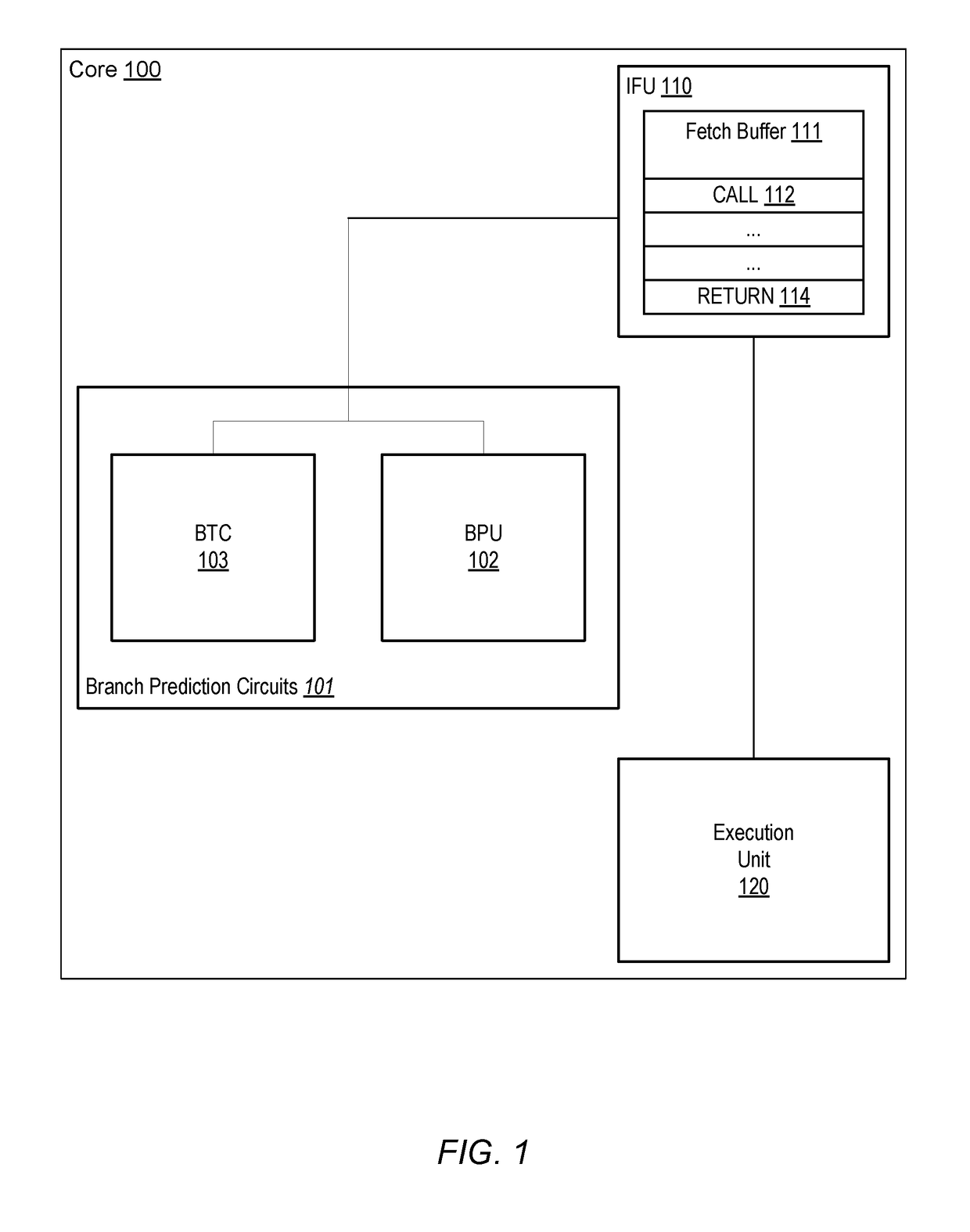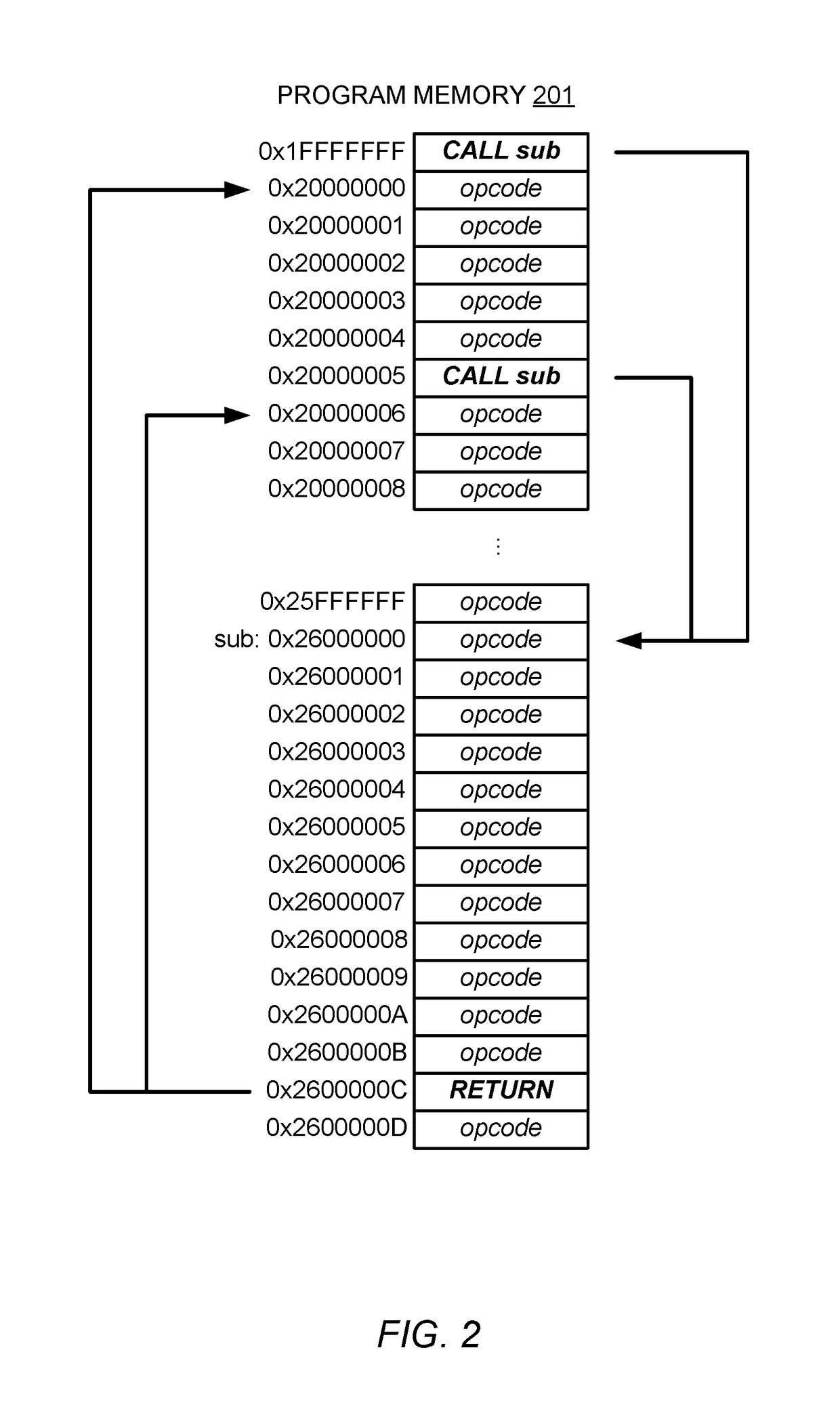Method for reducing fetch cycles for return-type instructions
a return type and fetch cycle technology, applied in the field of processing, can solve the problems of difficult prediction of return instructions, and more difficult prediction
- Summary
- Abstract
- Description
- Claims
- Application Information
AI Technical Summary
Benefits of technology
Problems solved by technology
Method used
Image
Examples
Embodiment Construction
[0020]Generally speaking, a processor core (or simply, a “core”) may refer to a unit of a processor that is capable of executing program instructions and processing data independently of other processor cores within the processor, such that multiple cores may execute instructions concurrently. Performance of a processing core may be impacted by a multitude of factors, including processor clock speed, a number of cores included in the processor, and speed of the memory accesses. One method for improving performance is to prefetch instructions for execution so that the instructions are decoded and ready to execute when an execution unit in the core gets to the instruction. Branch instructions, however, may complicate instruction prefetching, as they may redirect program flow to an associated target address. At least some branch instruction may be conditional, in which they either take a branch to the target address or continue with a contiguous program flow to a following instruction ...
PUM
 Login to View More
Login to View More Abstract
Description
Claims
Application Information
 Login to View More
Login to View More - R&D
- Intellectual Property
- Life Sciences
- Materials
- Tech Scout
- Unparalleled Data Quality
- Higher Quality Content
- 60% Fewer Hallucinations
Browse by: Latest US Patents, China's latest patents, Technical Efficacy Thesaurus, Application Domain, Technology Topic, Popular Technical Reports.
© 2025 PatSnap. All rights reserved.Legal|Privacy policy|Modern Slavery Act Transparency Statement|Sitemap|About US| Contact US: help@patsnap.com



